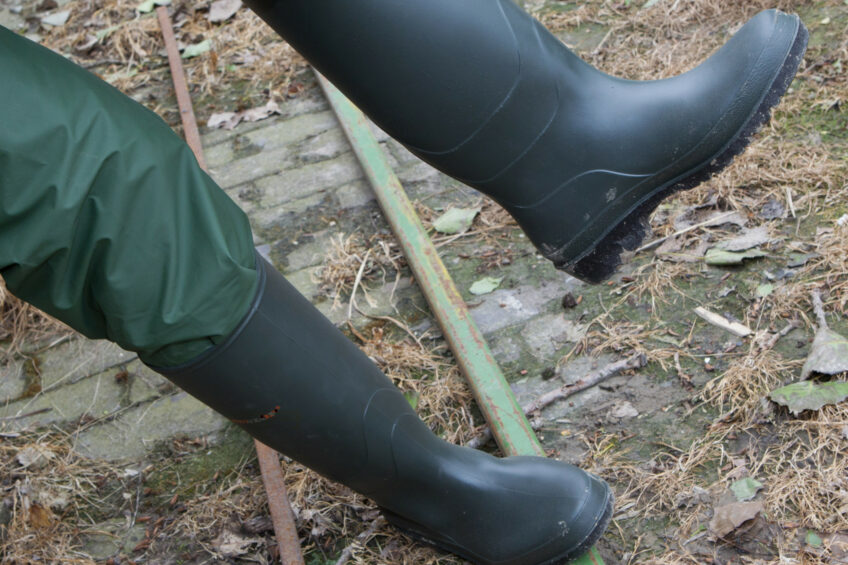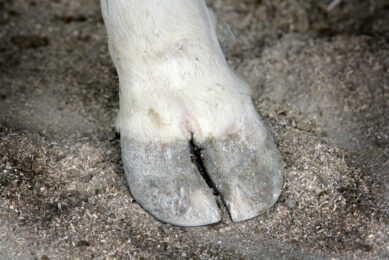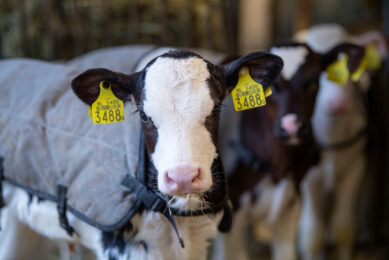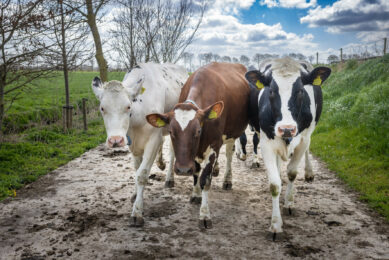Reliably detecting FMD and the role of small ruminants in transmission

A study carried out by researchers recently at the Pirbright Institute in collaboration with the National Veterinary Institute took place in northern Nigeria to evaluate reliable methods of detecting FMD virus in endemic settings. It also looked at the role of small ruminants in transmission of the virus.
Standard testing of Foot and Mouth Disease virus (FMDv) methods are particularly challenging in endemic countries with scarce resources and where multiple FMDv serotypes circulate. Therefore, alternative and reliable methods are needed to efficiently identify infected animals in a timely manner.
Oral and nasal swabs have been suggested as an alternative method to recover the virus from infected and clinically healthy animals. These methods have the advantages of being less invasive and allow the detection of infected animals prior to the appearance of clinical signs and/or when clinical signs are not noticeable.
Environmental sampling also presents an opportunity for non-invasive sample collection, enabling FMD surveillance at herd level and beyond regular investigation of clinical cases. This is of particular value in places where sampling individual animals is challenging or not feasible.
The study
The scientists looked at small ruminants (cattle, sheep and goats) and contaminated environments and their impact on the endemicity of FMD, as well as the implications for disease transmission, surveillance and control. Environmental samples, serum samples and oral swabs were tested and collected from cattle, sheep and goats.
Samples were collected from 5 households, 1 livestock market and 1 transhumance location (a location where herders settle for up to 2 weeks before continuing their journey) in both Bassa and Jos South local government areas in Plateau State in northern Nigeria.
A total of 783 serum samples were collected and tested for FMDv. Serum samples were collected from cattle (215 females and 69 males), sheep (332 females and 75 males) and goats (68 females and 24 males).
Oral swabs were collected from a subset of the animals from which serum samples were taken and tested for FMDv. Samples were collected from cattle, sheep (278 females and 67 males) and goats (55 females and 21 males).
A total of 458 environmental samples were collected. Samples collected were from a household in Bassa, a site in Jos South and the livestock market. Samples were also collected from boots, ropes, pegs, transport vehicles and hard floor surfaces.
Results
The study indicated that the force of infection was significantly lower in goats compared to sheep and cattle. By contrast, the force of infection was similar in sheep and cattle, suggesting sheep might play an important role in FMD transmission.
Results show oral and environmental swabs are suitable sampling methods for early detection at animal and herd level, respectively and provide insights on the role of small ruminants on FMD epidemiology.
When comparing the sequences obtained from environmental samples with sequences from other samples collected during outbreaks in nearby areas, the researchers found that sequences obtained from environmental samples were closely related to those submitted from clinical samples. These findings confirm environmental sampling can be used as a surveillance method in endemic settings, especially when combined with sequencing. In addition, this study showed that environmental swabs are a good herd level indicator of FMDv circulating in the area.
Also, premises where FMDv virus was detected in environmental samples had at least 1 animal in which FMDv virus was detected in serum samples and/or oral swabs. This is aligned with previous studies that showed that environmental sampling can detect FMDv in a herd more quickly than clinical inspection if sufficient samples are collected often enough.
To increase the likelihood of detection of FMDv in the environment, the researchers state that it is important to sample areas likely to have come into contact with secretions or excretions from infected animals.
The study, ‘Longitudinal study of foot-and-mouth disease virus in northern Nigeria: implications for the roles of small ruminants and environmental contamination in endemic settings’ was authored by Gubbins, S., Brown, E., Wungak, Y. et al. (2025).
Join 13,000+ subscribers
Subscribe to our newsletter to stay updated about all the need-to-know content in the dairy sector, two times a week.










